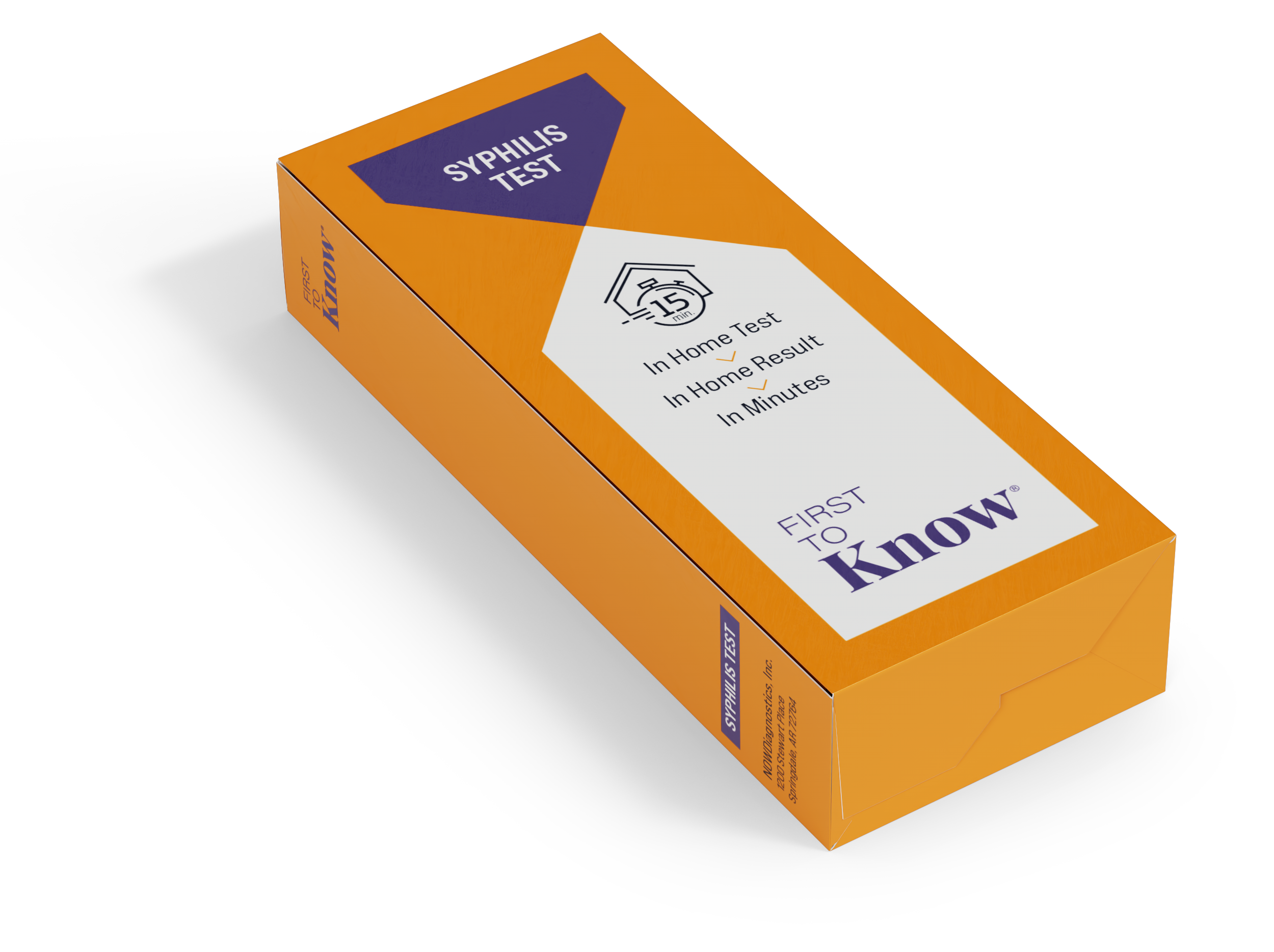Who’s At Risk?
Am I at risk for syphilis?
Sexually active people can get syphilis through unprotected vaginal, anal, or oral sex with a partner who has syphilis.*
Am i at risk for syphilis?
Syphilis cases are rising.
According to a recent CDC report, 207,255 total syphilis cases were reported in the United States in 2022, representing an 80% increase since 2018 and continuing a decades-long upward trend.*
Cases in nearly every demographic group and region increased, as did disparities in the burden of the disease among certain racial and ethnic populations.*
According to the CDC report, more than 3,700 cases of congenital syphilis were documented among newborns in 2022—more than 10 times the number diagnosed in 2012.*
Primary and Secondary Syphilis (P&S) in the United States.
2013–2022
Rates of Reported Cases by Sex
The rate of syphilis infections in men is more than three times that in women. However, rates have been increasing in both men and women over the past ten years.*
*Centers for Disease Control and Prevention. Sexually Transmitted Infections Surveillance 2022. Atlanta: U.S. Department of Health and Human Services; 2024.
3x
The rate of syphilis infections in men is more than three times that in women.
2013–2022
Rates of Reported Cases by Sex and Sex of Partners
Over the past 10 years, from 2013 to 2022, the plurality of P&S cases was among the men who have sex with men only community. During the same period, the number of cases among MSM increased 82.6%*
*Centers for Disease Control and Prevention. Sexually Transmitted Infections Surveillance 2022. Atlanta: U.S. Department of Health and Human Services; 2024.
82.6%
The plurality of P&S cases was among the men who have sex with men only.
2018–2022
Syphilis is impacting certain minority populations to a much greater extent.
Primary & secondary (P&S) syphilis is impacting certain minority populations to a much greater extent, specifically Black/African Americans, American Indian or Alaska Native people, and Native Hawaiian or other Pacific Islander people.*
*Centers for Disease Control and Prevention. Sexually Transmitted Infections Surveillance 2022. Atlanta: U.S. Department of Health and Human Services; 2024.
| Total Population and Reported Cases by Race | % Population | % Reported Cases |
|---|---|---|
| White | 58.9% | 33.9% |
| Black/AA | 12.6% | 31.7% |
| Hispanic/Latino | 19.1% | 20% |
| Asian | 6.1% | 1.7% |
| Multiracial | 2.4% | 1.7% |
| IA/AN | 0.7% | 2.8% |
| NH/PI | 0.2% | 0.3% |
| Other/Unknown | 6.2% |
2018–2022
Rates of Reported Cases by Race
In 2022, the highest rate of reported P&S cases per 100,000 persons was among American Indian or Alaska Native persons (67.0), followed by Black or African American persons (44.4).
*Centers for Disease Control and Prevention. Sexually Transmitted Infections Surveillance 2022. Atlanta: U.S. Department of Health and Human Services; 2024.
67%
American Indian or
Alaska Native persons
44%
Black or
African American
Distribution of Cases by Sex and Sex of Sex Partners
2022
Distribution of Cases by
Sex and Sex of Sex Partners
Of 59,016 reported P&S cases in 2022, 29.0% were among men who have sex with men only (MSM).* The MSM population is disproportionately impacted by syphilis.**
Centers for Disease Control and Prevention. Sexually Transmitted Infections Surveillance 2022. Atlanta: U.S. Department of Health and Human Services; 2024.
**U.S. Centers for Disease Control and Prevention
29%
of cases were among men who have sex with men only.
The First To Know® Syphilis Test
Syphilis and pregnancy
What is maternal syphilis?
Maternal syphilis is when a pregnant mother is infected with syphilis at the start of pregnancy or during pregnancy. There has been 3.2x increase in maternal syphilis in the United States between 2018 and 2022.*
What is congenital syphilis?
When a pregnant mother is infected with syphilis and does not receive early and effective treatment, they can transmit the infection to their unborn baby. In the United States, congenital syphilis has increased by 183.4% between 2018 and 2022.**
The effect of syphilis in pregnant women
If left undetected and untreated early in pregnancy, syphilis can be transmitted from mother to child (congenital syphilis), potentially inflicting serious harm, or even death, to an unborn child. The World Health Organization (WHO) has found that most untreated primary and secondary syphilis infections in pregnancy result in severe adverse pregnancy outcomes.
Syphilis infections that do not present symptoms during pregnancy can be cured with treatment, but infected mothers must first test for syphilis to know they have it.
Preventing congenital syphilis
The CDC estimates that nearly 90% of congenital syphilis cases in 2022 could have been prevented with timely testing and treatment during pregnancy.***
It’s important for you and your baby’s health to find out as soon as possible if you have syphilis to prevent long-term complications or worse. If you’re beginning to plan for a family, test yourself for syphilis as soon as possible.
My baby was born with congenital syphilis. Is there a way to treat the infection?
Yes. There is treatment for congenital syphilis. Babies who have congenital syphilis need to be treated right away—or they can develop serious health problems. Depending on the results of your baby’s medical evaluation, they may need antibiotics in a hospital for 10 days. In some cases, only one injection of antibiotic is needed. It’s also important that babies treated for congenital syphilis get follow-up care to make sure that the treatment worked.****
*CDC: Trends and Characteristics in Maternal Syphilis Rates During Pregnancy: United States, 2016–2022
**CDC: Sexually Transmitted Infections (STIs) Statistics
***CDC: Vital Signs—Syphilis in Babies Reflects Health System Failures
****CDC: About Congenital Syphilis
Congenital Syphilis
2013–2022
Reported Cases by Year of Birth and Rates of Reported Cases of Primary and Secondary Syphilis Among Women Aged 15–44 Years
During 2021 to 2022, the number of cases of congenital syphilis increased 30.6%, concurrent with a 17.2% increase in the rate of primary and secondary syphilis among women aged 15 to 44 years.
From 2013 to 2022, the number of cases of congenital syphilis increased by 937.3%, concurrent with an 809.5% increase in the rate of primary and secondary syphilis among women aged 15 to 44 years.
*Centers for Disease Control and Prevention. Sexually Transmitted Infections Surveillance 2022. Atlanta: U.S. Department of Health and Human Services; 2024.
937%
The percent increase of congenital syphilis cases from 2013 to 2022.
2022
Total Live Births and Reported Cases by Race/Hispanic Ethnicity of Mother
Congenital syphilis disproportionally impacts certain minority populations. Black/African American mothers represented 29.9% of congenital syphilis cases in 2022 despite being 14.3% of the live births. American Indian or Alaska Native mothers represented 4.6% of congenital syphilis cases despite being 0.7% of live births.*
Additionally, Hispanic or Latino mothers and Native Hawaiian or other Pacific Islander mothers were also overrepresented among congenital syphilis cases relative to their proportion of live births.*
*Centers for Disease Control and Prevention. Sexually Transmitted Infections Surveillance 2022. Atlanta: U.S. Department of Health and Human Services; 2024.
29.9%
Black/African American mothers represented 29.9% of congenital syphilis cases in 2022 despite being 14.3% of the live births.
2022
Rates of Reported Cases by Year of Birth, Race/Hispanic Ethnicity of Mother
In 2022, the highest rate of reported cases of congenital syphilis per 100,000 live births was among American Indian or Alaska Native mothers, followed by Native Hawaiian or other Pacific Islander mothers.
*Centers for Disease Control and Prevention. Sexually Transmitted Infections Surveillance 2022. Atlanta: U.S. Department of Health and Human Services; 2024.
In-home testing
Does syphilis make me more susceptible to HIV?
Syphilis, like other sexually transmitted infections (STIs), can cause open sores or breaks in the skin which may allow HIV to more easily enter your body. The CDC states that you may be more likely to get HIV because the same behaviors and circumstances that put you at risk for getting other STIs can also put you at greater risk for getting HIV.*

Find Out Now
Be the First To Know.
Get the First To Know Syphilis Test online or at a store near you to get accurate in-home results, in minutes.


